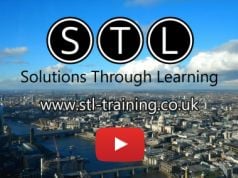98.7% Of all customers recommend us, we're so confident about our results we publish all reviews and stats
View Live Stats View Reviews
 Mastering Succession Planning Training
Mastering Succession Planning Training
Strategic Succession Planning: Training for Future Leaders
Face to face / Online public schedule & onsite training. Restaurant lunch included at STL venues.
From £495 List price £650
- 1 day Instructor-led workshop
- Courses never cancelled
- Restaurant lunch
Syllabus
Who is this course for?
This one-day course is designed for managers and leaders at all levels who are responsible for developing and implementing strategic plans within their organisations.
It is particularly beneficial for HR professionals, senior executives, and department heads who need to ensure a smooth transition of leadership and maintain business continuity.
Those involved in talent management and organisational development will also find the course highly relevant as it equips them with the necessary skills to identify and nurture future leaders.

Benefits
Attending this course provides participants with a comprehensive understanding of succession planning, enabling them to effectively identify and develop potential successors for critical roles within their organisations.Participants will gain practical skills in mentoring and coaching, learn how to implement robust succession strategies, and ensure business resilience in times of transition.
Additionally, the course offers valuable insights into creating personalised development plans and evaluating the effectiveness of succession initiatives, thereby enhancing overall organisational stability and leadership readiness.
Course Syllabus
Understanding Succession Planning
Definition and significance of succession planning
Key benefits for organisations
Common challenges and how to address them
Identifying Key Roles and Potential Successors
Identifying critical roles within the organisation
Criteria for selecting potential successors
Tools and techniques for talent identification
Developing Successors through Training and Mentoring
Creating personalised development plans for potential successors
Effective mentoring and coaching techniques
Implementing on-the-job training and development activities
Implementing a Succession Planning Strategy
Steps to develop and implement a succession plan
Engaging senior management and stakeholders in the process
Communicating the plan and gaining buy-in from key personnel
Evaluating and Adjusting the Succession Plan
Methods for assessing the effectiveness of the succession plan
Adjusting strategies based on feedback and changing organisational needs
Continuous improvement and future-proofing the succession plan
Prices & Dates
What you get
"What do I get on the day?"
Arguably, the most experienced and highest motivated trainers.
Face-to-face training
Training is held in our modern, comfortable, air-conditioned suites.
Lunch, breaks and timing
A hot lunch is provided at local restaurants near our venues:
- Bloomsbury
- Limehouse
Courses start at 9:30am.
Please aim to be with us for 9:15am.
Browse the sample menus and view joining information (how to get to our venues).
Refreshments
Available throughout the day:
- Hot beverages
- Clean, filtered water
- Biscuits
Online training
Regular breaks throughout the day.
Learning tools
In-course handbook
Contains unit objectives, exercises and space to write notes
24 months access to trainers
Your questions answered on our support forum.
Training formats & Services
Training Formats & Services
|
Learning & Development Resources
Soft Skills Blog
- Recruiting based on Attitudes and Personality
- Leader or Manager? The Key to Successful Leadership
- Performance Management part 4: Developing Individuals
Infographics
Training manual sample
Below are some extracts from our Mastering Succession Planning Training manual.
Succession Planning is a strategic process in which an organisation identifies and develops
internal personnel to fill key leadership and other critical roles in the
future. This ensures that the organisation continues to operate smoothly when
vacancies occur, particularly in essential positions. Succession planning
involves a series of steps to assess, develop, and retain employees who have
the potential to assume higher responsibilities.
Steps in
Succession Planning
- Identify Key Positions: Determine which roles are critical to
the organisation's success and require a succession plan.
- Assess Current Talent: Evaluate the current employees to
identify those with the potential to fill these key positions.
- Create Development Plans: Develop training and development plans
to prepare these employees for future roles.
- Implement Development Programs: Provide mentoring, coaching, job
rotations, and other training programs to develop the identified talent.
- Monitor and Review Progress: Regularly assess the development of the
potential successors and make adjustments as needed.
Benefits of
Succession Planning
- Ensures Continuity:
- Minimises Disruptions: By having a plan in
place, organisations can ensure a smooth transition when a key employee
leaves, reducing the risk of disruptions.
- Maintains Stability: It helps maintain
stability within the organisation, ensuring that operations continue
seamlessly.
- Identifies and Develops Talent:
- Talent Recognition: Helps in identifying
high-potential employees who can be groomed for future leadership roles.
- Focused Development: Provides a structured
approach to employee development, aligning their growth with the organisation's
future needs.
- Increases Employee Engagement and
Retention:
- Career Pathways: Shows employees that the
organisation is invested in their career growth, increasing their
engagement and commitment.
- Retention: Employees are more likely
to stay with an organisation that offers clear career progression
opportunities.
- Improves Organizational Knowledge:
- Knowledge Transfer: Facilitates the transfer
of knowledge and expertise from experienced leaders to potential
successors, preserving institutional knowledge.
- Skill Enhancement: Encourages continuous
learning and skill development within the organisation.
- Supports Strategic Planning:
- Alignment with Goals: Aligns employee
development with the organisation's long-term strategic goals and
objectives.
- Proactive Approach: Allows the organisation
to be proactive in managing its talent pipeline rather than reacting to
unexpected vacancies.
- Enhances Leadership Development:
- Builds Leadership
Pipeline: Ensures a steady pipeline
of qualified leaders who are prepared to step into critical roles as
needed.
- Leadership Readiness: Prepares potential
leaders for future challenges, making them more effective when they
assume leadership roles.
How could
Succession Planning improve your organisation’s
Productivity?
Efficiency?
Thanks. Your download will begin shortly.
Please help us
Share or create a link to this manual today!
Just follow these simple instructions...








